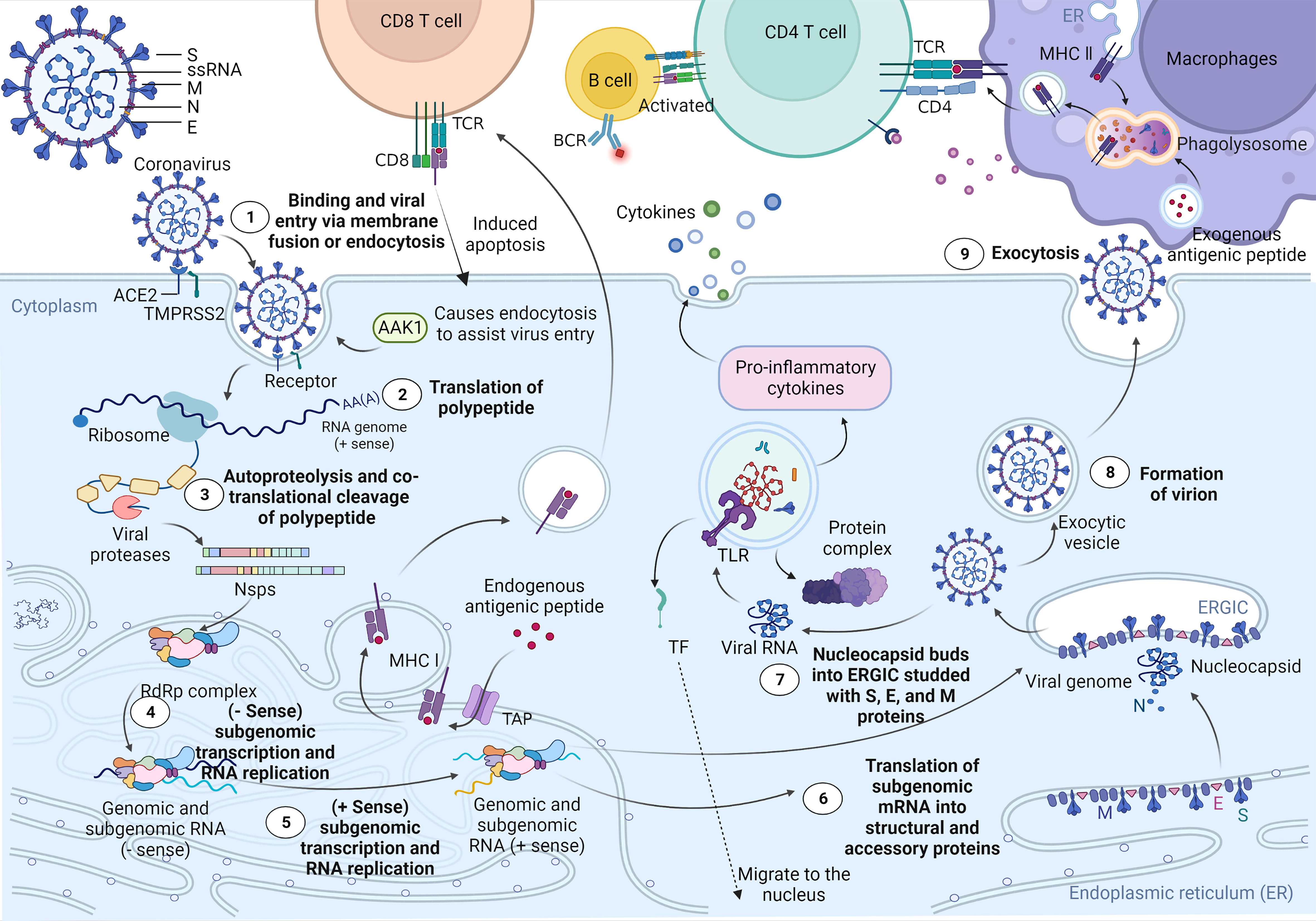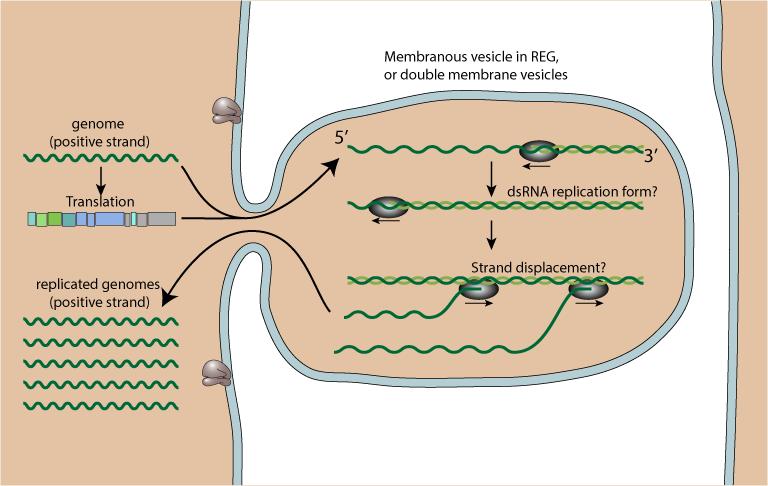During replication of RNA viruses, there are at least three types of RNA that must be synthesized: the genome, a copy of the genome (copy genome), and mRNAs. Some RNA viruses also synthesize copies of subgenomic mRNAs. RdRp is the key player for all of these processes. RdRps of all RNA viruses probably arose from a common ancestor.
Viruses join the circular RNA world – Tan – 2021 – The FEBS Journal – Wiley Online Library
RNAi Step 2: Border guards Another set of RNAs and proteins pick up some of the chopped-up viral RNA from Step 1. You can think of them as setting up security checkpoints near a cell’s ribosome, where translation occurs. These molecular border guards compare incoming messenger RNA (mRNA) that comes from either the virus or the host cell against their small pieces of the virus’s genetic code.

Source Image: bartleby.com
Download Image
Specifically, viruses depend on host cells for: (1) energy, mainly in the form of nucleoside triphosphates, for polymerization involved in genome and viral protein synthesis; (2) a protein-synthesizing system for synthesis of viral proteins from viral mRNAs (some viruses also require host enzymes for posttranslational modification of their prote
![Exploring regulatory networks in plants: transcription factors of starch metabolism [PeerJ]](https://dfzljdn9uc3pi.cloudfront.net/2019/6841/1/fig-4-full.png)
Source Image: peerj.com
Download Image
Frontiers | Circular RNAs as emerging regulators in COVID-19 pathogenesis and progression Animal RNA viruses can be placed into different groups depending on their type of replication. Some RNA viruses have their genome used directly as if it were mRNA. The viral RNA is translated directly into new viral proteins after infection by the virus. Some RNA viruses carry enzymes which allow their RNA genome to act as a template for the

Source Image: sciencenews.org
Download Image
Rna Viruses Require Their Own Supply Of Certain Enzymes Because
Animal RNA viruses can be placed into different groups depending on their type of replication. Some RNA viruses have their genome used directly as if it were mRNA. The viral RNA is translated directly into new viral proteins after infection by the virus. Some RNA viruses carry enzymes which allow their RNA genome to act as a template for the Dec 20, 20221. Introduction RNA viruses are obligate intracellular parasites characterised by extremely high genetic variability and phenotypic diversity, facilitating infection of an extensive range of hosts [ 1, 2, 3 ].
Gene drives spread their wings
RNA viruses require their own supply of certain enzymes because a. host cells rapidly destroy the viruses. b. host cells lack enzymes that can replicate the viral genome. c. these enzymes translate viral mRNA into proteins. d. these enzymes penetrate host cell membranes. Verified Solution RNA Replication – an overview | ScienceDirect Topics

Source Image: sciencedirect.com
Download Image
The find of COVID-19 vaccine: Challenges and opportunities – ScienceDirect RNA viruses require their own supply of certain enzymes because a. host cells rapidly destroy the viruses. b. host cells lack enzymes that can replicate the viral genome. c. these enzymes translate viral mRNA into proteins. d. these enzymes penetrate host cell membranes. Verified Solution

Source Image: sciencedirect.com
Download Image
Viruses join the circular RNA world – Tan – 2021 – The FEBS Journal – Wiley Online Library During replication of RNA viruses, there are at least three types of RNA that must be synthesized: the genome, a copy of the genome (copy genome), and mRNAs. Some RNA viruses also synthesize copies of subgenomic mRNAs. RdRp is the key player for all of these processes. RdRps of all RNA viruses probably arose from a common ancestor.

Source Image: febs.onlinelibrary.wiley.com
Download Image
Frontiers | Circular RNAs as emerging regulators in COVID-19 pathogenesis and progression Specifically, viruses depend on host cells for: (1) energy, mainly in the form of nucleoside triphosphates, for polymerization involved in genome and viral protein synthesis; (2) a protein-synthesizing system for synthesis of viral proteins from viral mRNAs (some viruses also require host enzymes for posttranslational modification of their prote

Source Image: frontiersin.org
Download Image
RNA virus replication/transcription ~ ViralZone Taxonomy and replication strategies of different types of RNA viruses. An RNA virus is a virus—other than a retrovirus—that has ribonucleic acid as its genetic material. The nucleic acid is usually single-stranded RNA but it may be double-stranded (dsRNA). Notable human diseases caused by RNA viruses include the common cold, influenza, SARS, MERS, COVID-19, Dengue Virus, hepatitis C

Source Image: viralzone.expasy.org
Download Image
Viral and subviral derived small RNAs as pathogenic determinants in plants and insects – ScienceDirect Animal RNA viruses can be placed into different groups depending on their type of replication. Some RNA viruses have their genome used directly as if it were mRNA. The viral RNA is translated directly into new viral proteins after infection by the virus. Some RNA viruses carry enzymes which allow their RNA genome to act as a template for the

Source Image: sciencedirect.com
Download Image
Bio-Plex Multiplex Immunoassay System | Bio-Rad Dec 20, 20221. Introduction RNA viruses are obligate intracellular parasites characterised by extremely high genetic variability and phenotypic diversity, facilitating infection of an extensive range of hosts [ 1, 2, 3 ].
Source Image: bio-rad.com
Download Image
The find of COVID-19 vaccine: Challenges and opportunities – ScienceDirect
Bio-Plex Multiplex Immunoassay System | Bio-Rad RNAi Step 2: Border guards Another set of RNAs and proteins pick up some of the chopped-up viral RNA from Step 1. You can think of them as setting up security checkpoints near a cell’s ribosome, where translation occurs. These molecular border guards compare incoming messenger RNA (mRNA) that comes from either the virus or the host cell against their small pieces of the virus’s genetic code.
Frontiers | Circular RNAs as emerging regulators in COVID-19 pathogenesis and progression Viral and subviral derived small RNAs as pathogenic determinants in plants and insects – ScienceDirect Taxonomy and replication strategies of different types of RNA viruses. An RNA virus is a virus—other than a retrovirus—that has ribonucleic acid as its genetic material. The nucleic acid is usually single-stranded RNA but it may be double-stranded (dsRNA). Notable human diseases caused by RNA viruses include the common cold, influenza, SARS, MERS, COVID-19, Dengue Virus, hepatitis C